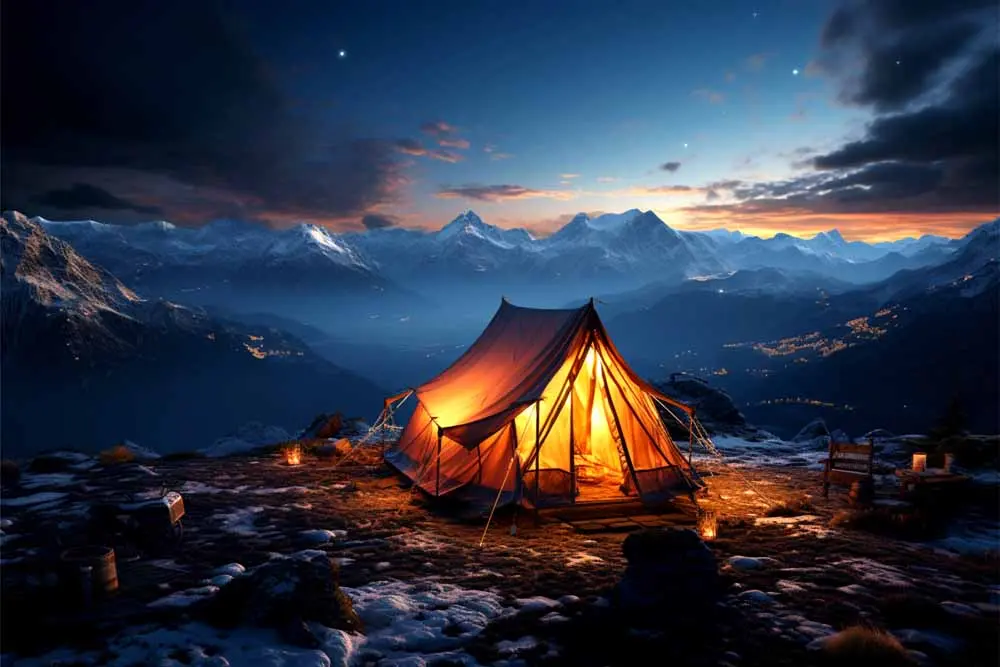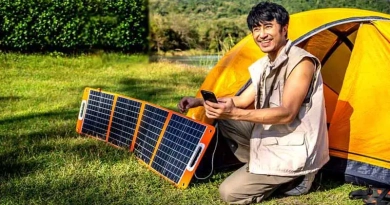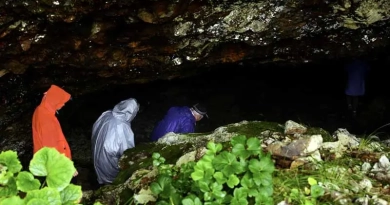
Mastering Cold Nights in a Tent
Braving the Chill
As the golden hues of dusk gave way to the somber shades of twilight, the wilderness around our campsite donned its nocturnal cloak, and the cold crept in like an uninvited guest. Wrapped snugly in my coat beside the dwindling campfire, a question, often mulled over by countless adventurers, broke the silence of the crisp mountain air: “How do I deal with cold nights in a tent?” Beneath the expansive, star-studded sky, this query transcended mere comfort—it was a matter of survival.
The Cold Reality: Challenges of Camping in Low Temperatures
Camping in cold weather introduces a spectrum of challenges that can transform a tranquil retreat into a grueling endurance test. The primary battle is against the cold itself, where the objective is to retain body heat against the relentless chill of the night.
Insulation and Heat Loss: A tent’s fabric, while versatile and lightweight for ease of transport and setup, lacks substantial insulative properties. This thin barrier between camper and wilderness offers minimal resistance to the biting cold, leading to significant heat loss. Effective insulation within the tent is crucial to buffer against the external cold and maintain a warm internal environment.
Moisture Control: Breathing in the confined space of a tent leads to condensation; the warm, moist air from one’s breath meets the colder tent surface, creating dampness. This not only makes the tent uncomfortable but also poses a risk of hypothermia, as the moisture accelerates the loss of body heat.
Equipment Limitations: Inadequate gear can exacerbate the harshness of cold nights. Many campers find themselves ill-prepared with sleeping bags, tents, or clothing that do not offer sufficient protection against lower temperatures. This gap in preparedness can turn what should be a restful night into a test of fortitude.
Strategies for Warmth: Ensuring Comfort and Safety
1. Selecting Appropriate Gear:
- Four-Season Tent: Opt for a four-season tent when camping in cold conditions. These tents are designed with less mesh and thicker materials, providing enhanced insulation and better resistance to chilly winds.
- Quality Sleeping Bag: Choose a sleeping bag rated for temperatures below the lowest you expect to encounter. Down sleeping bags are particularly effective, known for their excellent insulation while remaining lightweight and compressible.
- Insulated Sleeping Pad: Never underestimate the cold emanating from the ground. An insulated sleeping pad with a high R-value is indispensable for creating a warm barrier between you and the cold earth.
2. Dressing for the Occasion:
- Layered Clothing: Start with a moisture-wicking base layer to keep your skin dry, add an insulating middle layer to trap body heat, and if necessary, a waterproof outer layer to fend off any dampness.
- Essential Accessories: A warm hat, gloves, and thermal socks are crucial, as significant heat loss occurs through the extremities, including the head.
3. Enhancing Tent Insulation:
- Tent Footprint: Place a footprint under the tent to add an extra layer of insulation from the cold ground.
- Thermal Blankets: Lining the tent walls with thermal blankets can help reflect body heat, significantly enhancing the internal temperature.
4. Pre-Sleep Warm-Up:
- Hot Drinks and Meals: Consuming something hot before bed can significantly increase your core temperature.
- Mild Physical Activity: A brief walk or light exercise before entering your tent boosts body heat, ensuring you start the night off warm.
Necessary Resources and Tools
To implement these strategies effectively, your camping arsenal should include:
- A robust four-season tent
- A high-quality, low-temperature rated sleeping bag
- An insulated sleeping pad
- Thermal blankets
- Appropriate clothing for layering
- A tent footprint
- A portable stove for heating food and beverages
- A reliable headlamp or flashlight for safety
Embracing the Cold
As the first light of dawn scattered the remnants of the night, the chill receded, leaving behind a sense of achievement and a newfound respect for the elements. Handling the cold in a tent is much more than enduring harsh conditions; it’s about thoughtful preparation, strategic gear selection, and embracing the challenges posed by nature. With the right equipment, a clear understanding of the environment, and proactive measures, the cold becomes merely another facet of the adventure—a tale to recount by the fire under another sky, in the wild’s magnificent embrace.






